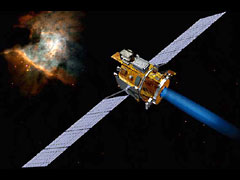 ION Thruster Rocket Engine
ION Thruster Rocket Engine 
This is a page for a challenging project...
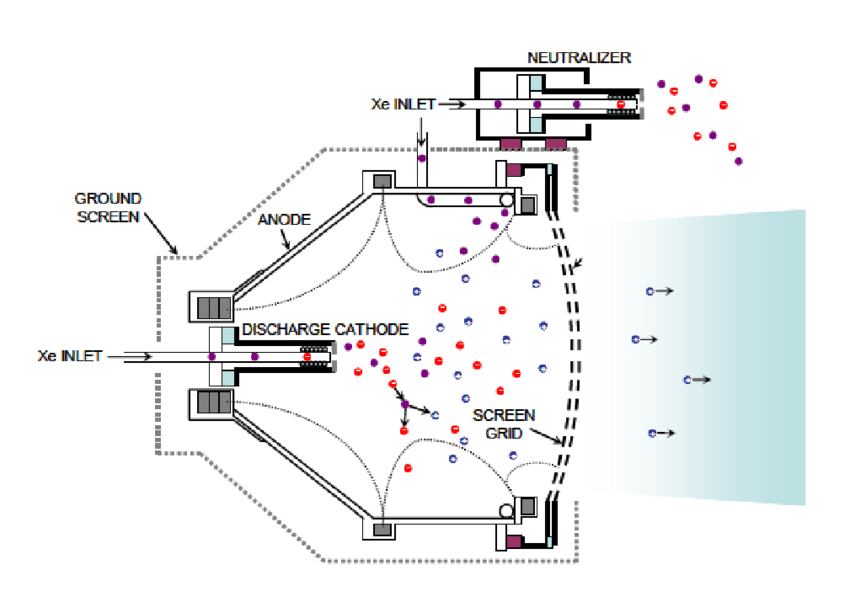 |
We all know about ion engines that are recently being used as a new approach to sending probes to far targets in space. Unlike chemical thrusters , ion engines are providing far less thrust but can be operated for far longer periods only using electricity and very little propellant. A chemical thruster can provide a vast amount of thrust to overcome the gravity of earth and reach escape velocity, but burns several tons of propellant to operate for 15 minutes (and have to carry all that load too). An ion thruster however can provide a very little thrust (millionth fraction of a chemical thruster) but can operate for very long time (months) on few liters of propellant. The challenge is, can a decent ion engine be made at home using easily available parts and simple electronics such as Arduino... A classic ion thruster works as these schematics. A gas of some sort is ionized and sent into a magnetic chamber via a discharge cathode in which ionized gas is directed to the exhaust nozzle surrounded by an anode which collects the electrons and the leftover positive ions are thrusted from the nozzle excited by magnets. The propelled ions are thrusted out of the nozzle as a beam through a screen grid and the collected electrons are then inserted into the beam to reunite with ionized exhaust gas as an outburst plasma beam... |
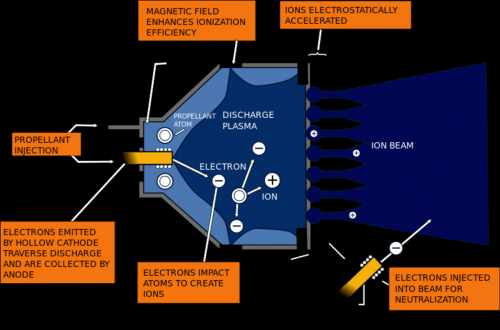 |
|---|
| However another more sophisticated approach is used by newly developed ion thrusters such as VASIMR. This schematic shows how VASIMR works. In this new engine microwaves are used to excite the gas and create a more energetic plasma. Also plasma is pushed to the nozzle using pwm controlled electromagnets thus creating a more powerful thrust beam. The heaviest noble gas Xenon is selected as propellant, due to the fact that mass of propellant matters as well as momentum of it... In this effort I will try to implement a sophisticated ion thruster at home using simple parts and electronics... |
 |
Some thinkering and design work on July 2020...
In this attempt there will be lots of design work, coding, trial and error and frustration. First I began with designing and making of the rear part, the magnetic coils and sequencer that will throw the excited plasma out as a beam. The 5 coils are squenced by arduino in a looping magnetization from coil 1 to 5 sequentially at 50ms intervals. First tests show that the coils are way too weak and must have more windings. However they can throw a paper clip out as intended. In the resulting design these coils will be around a metal pipe which is grounded... The Arduino sketch of the sequencer: CoilSequencer
|
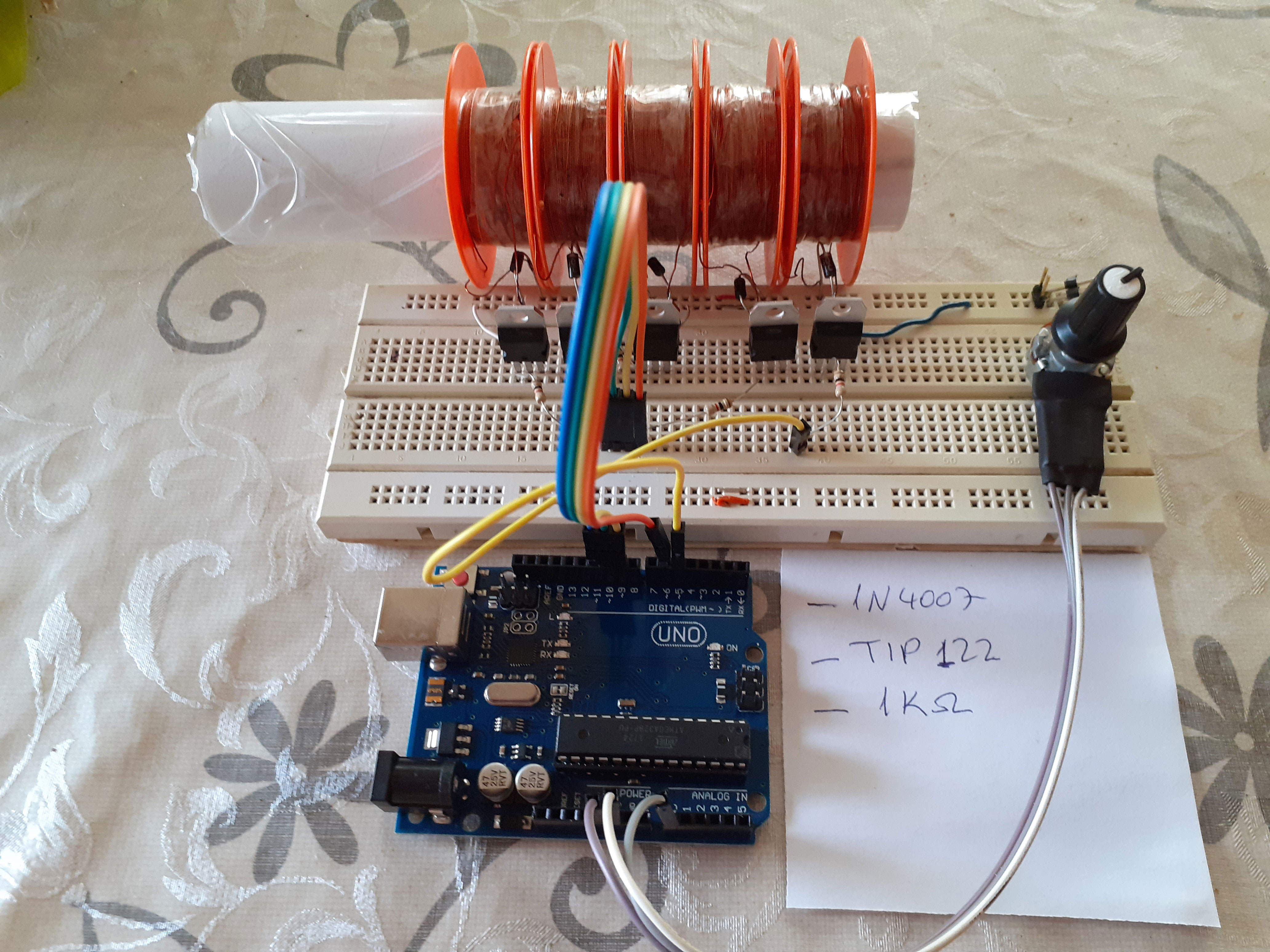 |
This is the final test setup for coil sequencer. Works nicely. I made minor upgrades such as a fortified power line which can carry more amps. No heating at the moment. The 5 coils are fired up sequentially from 1 to 5 generating an outflow magnetically. The pot is there to control the frequency of the sequencing (how fast the flow will be)... This was the easy part of the project. Now the challenge is to add a plasma chamber (for ionizing the thruster gas)... My plan is to find a small microwave oven and break apart, using the magnetron as plasma generator. The plasma chamber will be a pyrex cylinder ( labratory equipment for testing prototype) in which I can observe the created plasma. I will use the metal mesh of the microwave oven door as safety cover for the pyrex cylinder. The magnetron nozzle will be at the back of the cylinder opening together with the gas intake. Excited plasma will be flowing forward to coil sequencer at the front from which it will be magnetically thrusted out. Grounded core will act like reuniting the collected electrons with the outflowing positive ions... |
|
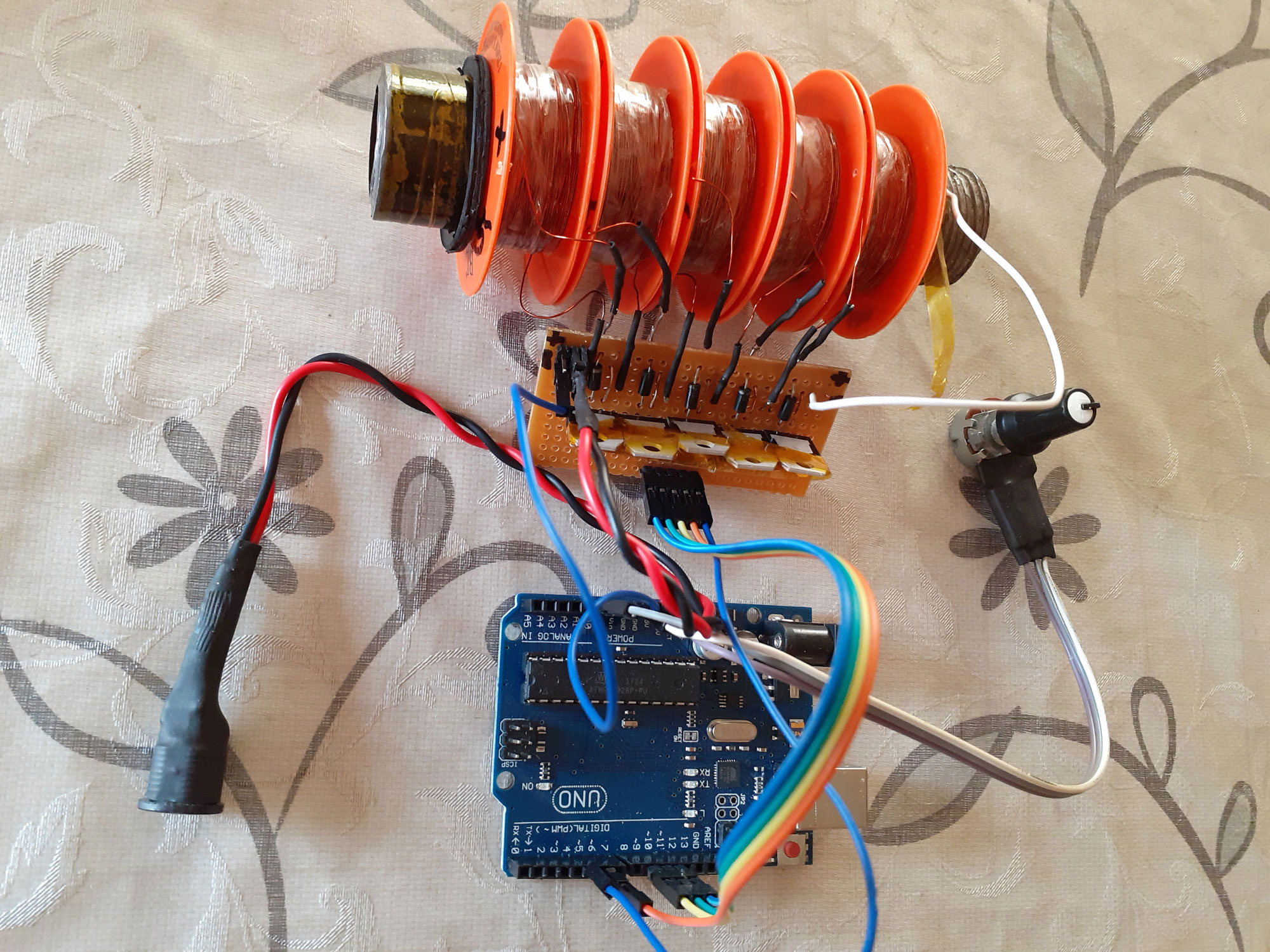

 Follow Me...
Follow Me...
 My page at MyRobotLab...
My page at MyRobotLab...